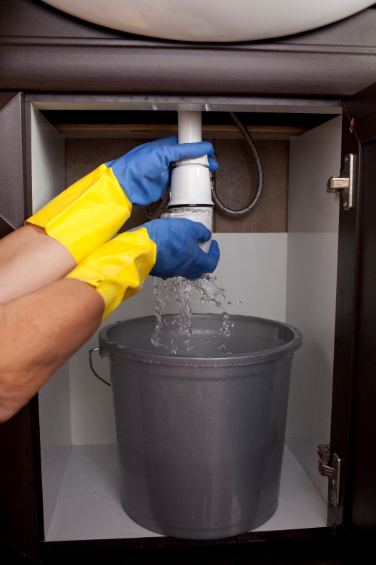A bathroom leak can be a nightmare for homeowners. Not only can it lead to water damage, but it can also drive up your water bills and create a breeding ground for mould and mildew. Knowing how to repair bathroom leaks is essential in maintaining the health and safety of your home. This blog post answers some of the most frequently asked questions about bathroom leaks, offering you everything you need to know about fixing them quickly and efficiently.
What Are the Most Common Causes of Bathroom Leaks?
When it comes to bathroom leak repair, identifying the cause is the first step toward fixing the problem. The most common culprits include leaky faucets, showerheads, and toilets. Over time, worn-out seals, corroded pipes, or faulty caulking can lead to leaks in your bathroom. If you’re looking to repair bathroom leaks, it’s important to first determine whether the leak is caused by a broken pipe, an issue with the faucet, or something as simple as a crack in the caulk. Understanding the root cause ensures you can take the right approach to repair bathroom leaks and prevent them from worsening.
How Do I Know If I Have a Leak in My Bathroom?
Detecting a bathroom leak early can save you from extensive damage. Some signs that you may need to repair bathroom leaks include damp walls, water stains on the ceiling, musty smells, or an increase in your water bill. To check for hidden leaks, you can conduct a simple test by turning off all faucets and appliances, then checking your water meter. If the meter moves, it indicates a hidden leak. For a toilet leak, you can use food dye in the tank to check if it’s leaking into the bowl. Recognizing these signs early is key to taking action and addressing the issue before it becomes a major problem that requires a larger bathroom leak repair project.
Can I Fix a Bathroom Leak Myself or Do I Need a Professional?
When it comes to fixing a bathroom leak, the choice between DIY and professional help depends on the severity of the problem. Minor leaks, such as a dripping faucet or a worn-out seal around the toilet, are easy to repair bathroom leaks on your own with basic tools and some time. However, more complex issues, like leaking pipes or damage behind the walls, may require a professional plumber. If you’re unsure, it’s always a good idea to get a professional opinion, especially if you’re dealing with extensive water damage. Remember, attempting to repair bathroom leaks incorrectly can worsen the problem and cost you more in the long run.
What Are the Steps for Fixing a Leaking Faucet or Showerhead?
To repair bathroom leaks caused by a leaky faucet or showerhead, you’ll need to first turn off the water supply. Using a wrench or screwdriver, remove the handle and check the washers and O-rings for damage. These small parts often cause leaks when they wear out over time. Simply replacing the washer or seal can stop the leak and restore the fixture. If the faucet or showerhead is still leaking after replacing these parts, you might need to replace the entire fixture. This simple process can save you the cost of professional repair bathroom leak services.
How Do I Fix a Leaky Toilet?
A leaking toilet can be caused by several issues, such as a worn-out flapper, faulty flush valve, or a broken tank-to-bowl seal. To repair bathroom leaks in the toilet, start by turning off the water supply. Then, inspect the components inside the tank for wear and tear. Replacing the flapper or flush valve is usually enough to stop the leak. If the leak persists, you may need to replace the entire toilet seal or even the whole toilet if there’s damage to the porcelain. Fixing a leaky toilet yourself is often easy, but if you’re unsure, don’t hesitate to call in a professional to handle the repair bathroom leak job.
Should I Replace or Repair Damaged Bathroom Pipes?
When dealing with a bathroom leak, sometimes the problem lies with the pipes. Damaged or corroded pipes may require you to repair bathroom leaks by replacing the affected section of pipe. If the pipe is severely corroded or cracked, patching it up temporarily may not work. In such cases, replacing the pipe is the only viable option. For smaller leaks, you might be able to use a pipe repair clamp or sealant, but these are only temporary solutions. If the pipe is hidden behind walls or under the floor, it’s best to consult a plumber to properly fix the problem and prevent further damage. Taking action early and addressing the problem promptly can save you from costly repairs later on.
How Can I Prevent Bathroom Leaks in the Future?
Preventing leaks is the best way to avoid costly repairs down the line. Regular maintenance is key to avoiding the need to repair bathroom leaks. Check seals around the bathtub, shower, and toilet annually and replace caulking if necessary. Inspect your pipes for signs of corrosion or damage, and always replace worn-out faucet washers and showerheads. Additionally, avoid over-tightening valves or handles, as this can cause wear and tear. By staying proactive and conducting routine checks, you can keep your bathroom free of leaks and minimize the risk of needing extensive leak repairs in the future.
Takeaway
Dealing with a bathroom leak can be stressful, but knowing how to repair bathroom leaks effectively can save you both time and money. Whether you’re fixing a leaky faucet, repairing a toilet, or replacing damaged pipes, it’s crucial to address the issue promptly to avoid water damage and higher repair costs. Regular inspections and early detection are essential to keeping your bathroom in top condition. If you’re ever unsure, don’t hesitate to contact a professional plumber to ensure your repair bathroom leak job is done right.




